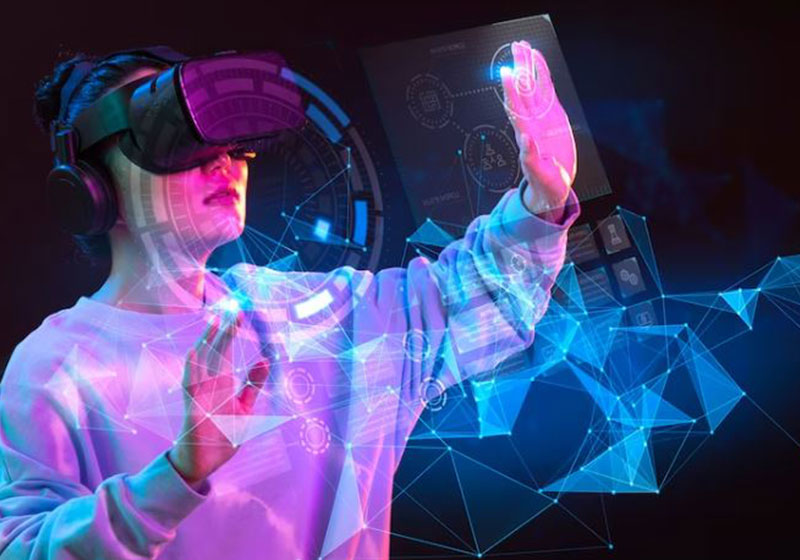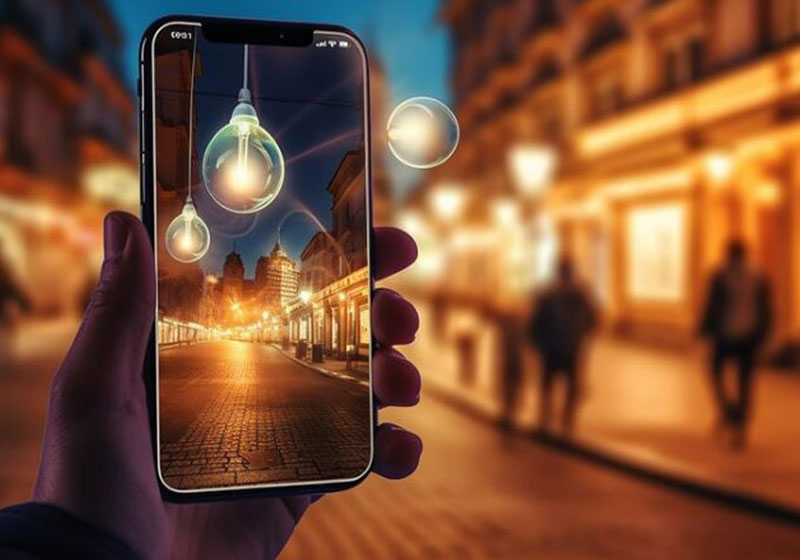AR and VR
The 9 Biggest Virtual And Augmented Reality Trends in 2025
 Updated 01 Nov 2023
Updated 01 Nov 2023

In 2025, Virtual Reality (VR) and Augmented Reality (AR) are expected to redefine industries by blending the digital world with reality in unprecedented ways. From entertainment to healthcare, these immersive technologies are unlocking new opportunities. In this article, we’ll explore the nine biggest VR and AR trends set to shape the future.
1. Immersive Metaverse Experiences
The metaverse has evolved from a concept into a fully functional space where users can interact with each other in real time. As VR and AR technologies advance, the metaverse will provide more immersive environments for socializing, gaming, work, and commerce. Expect hyper-realistic avatars and environments that offer rich, real-time experiences.
- Key developments: More businesses and educational institutions moving into VR-based campuses; virtual stores offering an entirely new shopping experience.
- Real-world example:In 2025, Accenture created a VR-based metaverse campus, allowing its 150,000 new employees to collaborate and onboard virtually.
2. AR Integration in Retail and E-Commerce
Retailers are enhancing customer experiences by integrating AR into their online platforms and physical stores. AR allows customers to visualize products in their own spaces, try on clothes virtually, or see how items would fit within their home.
- Key trends: Try-before-you-buy experiences, virtual showrooms, and AI-enhanced AR filters for personalized shopping.
- Real-world example: Warby Parker uses AR to let customers try on glasses virtually via their app, offering a seamless buying experience without needing to visit a physical store.
3. VR and AR for Remote Work and Collaboration
The COVID-19 pandemic accelerated the adoption of remote work. By 2025, VR and AR will become the standard for virtual collaboration. Companies will use VR to create fully immersive meeting rooms and AR for interactive real-time communication, replacing traditional video conferencing tools.
- Key trends: 3D virtual offices and collaboration tools that allow teams to interact with complex data in real-time.
- Real-world example: PwC implemented VR training for its employees, resulting in faster learning and better retention compared to traditional methods.
4. AR-Powered Health and Fitness
AR is transforming the fitness industry by providing real-time guidance, improving performance tracking, and offering personalized workout plans. From virtual fitness trainers to real-time exercise feedback, AR is helping individuals achieve their health goals.
- Key trends: AR fitness glasses, real-time health tracking, and gamified fitness experiences that encourage users to stay active.
- Real-world example: Adidas launched an AR-powered running app where users can see virtual coaches guiding them through outdoor routes in real time.
5. VR Therapy and Mental Health Support
Virtual reality is becoming a powerful tool in mental health care. In 2025, we can expect VR therapy sessions that offer treatments for anxiety, PTSD, and depression. VR can provide controlled, immersive environments to help patients confront and overcome their challenges.
- Key trends: Virtual therapy environments, mindfulness programs, and AR-guided meditation.
- Real-world example: Oxford VR successfully used VR therapy to reduce social anxiety in patients by up to 68% in clinical trials.
6. AI-Enhanced VR and AR Experiences
AI is playing a crucial role in enhancing VR and AR by making these experiences more interactive and personalized. Machine learning algorithms will allow users to experience environments that adapt to their emotions, behaviors, and preferences.
- Key trends: AI-powered avatars, adaptive learning experiences, and dynamic environments that respond to real-time data.
- Real-world example: Snapchat’s AR filters are powered by AI, offering personalized effects based on user interactions and surroundings.
7. 5G and Cloud Streaming for Seamless VR and AR
The advent of 5G technology is paving the way for more reliable and faster VR and AR experiences. Cloud streaming enables users to access high-quality, resource-intensive VR and AR content from anywhere, without the need for powerful hardware.
- Key trends: Cloud-based AR/VR apps, faster streaming speeds, and seamless cross-device experiences.
- Real-world example: HTC Viveport provides cloud-based VR gaming, allowing users to access VR games without the need for powerful local hardware.
8. AR Navigation for Everyday Life
AR is revolutionizing navigation by overlaying real-time directions and information onto the physical world. From navigating through busy city streets to guiding individuals in complex spaces like airports, AR navigation will become a part of daily life.
- Key trends: AR navigation in cars, smart glasses, and wearable devices providing instant location-based data.
- Real-world example: WayRay, a Swiss company, developed AR head-up displays (HUDs) for cars, projecting navigation and critical data onto the windshield in real-time.
9. Education and Training in VR and AR
Educational institutions and businesses are increasingly adopting VR and AR for training purposes. In 2025, we’ll see the rise of virtual classrooms and hands-on simulations that allow users to learn and practice in an interactive environment. Industries like medicine, engineering, and military training will see vast improvements in training quality.
- Key trends: Simulated environments for medical procedures, hands-on training for complex tasks, and global virtual classrooms.
- Real-world example: Johns Hopkins University used VR to train surgeons, resulting in a 30% improvement in surgical performance compared to traditional training methods.
Conclusion
As VR and AR technologies continue to evolve, their impact across industries will be transformative. By 2025, we will witness a convergence of these technologies with AI, cloud computing, and 5G, pushing the boundaries of what’s possible. From immersive virtual spaces to practical, real-world applications, the future of VR and AR is incredibly exciting.
At Q3 Technologies, we specialize in developing custom AR and VR solutions tailored to meet the unique needs of various industries. Whether it’s creating immersive training environments, interactive retail experiences, or real-time collaboration platforms, our team leverages cutting-edge technologies to deliver high-quality solutions. With a strong focus on innovation and user experience, Q3 Technologies helps businesses stay ahead of the curve in the ever-evolving world of AR and VR.
Table of content
- Immersive Metaverse Experiences
- AR Integration in Retail and E-Commerce
- VR and AR for Remote Work and Collaboration
- AR-Powered Health and Fitness
- VR Therapy and Mental Health Support
- AI-Enhanced VR and AR Experiences
- 5G and Cloud Streaming for Seamless VR and AR
- AR Navigation for Everyday Life
- Education and Training in VR and AR
Need to hire offshore developers?

Explore More

Mobile Applications

